If you didn’t see, United is devaluing its stopover rules.
I’ve had some stopover tricks I’ve wanted to share, and since United will be killing all these stopover tricks Oct 6… I might as well spill all the beans.
There is one big pricing trick that I have not shared on the blog yet, but I’ve had time to research, test, and finely define the rules and mechanisms. As promised tomorrow I will publish a post on some more United stopover tricks.
But before I share that tomorrow, I need to do a refresher on the United stopover tricks I’ve already taught. This post will be an overview for all the tricks I’ve talked about with United, and a little more added detail to prepare for tomorrow’s post.
Both of these posts could be useful for anyone wanting to burn a bunch of United miles before the rules change in two months.
Refresher on United Routing Rules
1 Stopover & 2 Open-jaws
- Only on Roundtrips
- Can not be applied to tickets within one region
- Open-jaws can not be applied to the stopover
- Open-jaws can be applied to either the destination, or the returning destination (meaning returning to a different city than where starting from)
Rules are loose
- Backtracking generally allowed
- As long as regions work together, or it’s in the same region
- See United Routing Rules section on regions
Booking
- United.com
- Check “Award Travel”
- Click “Multiple Destinations”
Basic examples of stopovers
If you totally understand United stopover and open-jaw Rules you can skip to the next section – Advanced Stopovers
Stopover.
- US → Rome → Dubai → US:
Spend one [week] in Rome, and one [week] in Dubai. Dubai is the destination and Rome is the “stopover”. It doesn’t matter what order you do it – you can stop in Rome on the way to Dubai, or on the way back.
Quick note about rules
Understand the times don’t matter at all. The only thing that makes something a destination/stopover (according to United), is if the stop is more than 24 hours.
(Although one week in Dubai is probably 7 days too long).
Open-Jaw
- US → Paris, then Rome → US:
Fly to Paris, and then a [week] later fly out of Rome. Perhaps you take a train to Rome, or a RyanAir flight… doesn’t matter. The point is, an “open-jaw” is the section of travel where United is not responsible for your transit.
Stopover with 1 Open-Jaw
- New York → Paris (stopover)
- Paris → Rome (Destination)
- Istanbul → New York
Stopover in Paris for [two days], on the way to your destination, Rome.
The stopover example we’ve already done but this time we’ll add an open-jaw to the destination. An open-jaw doesn’t create an other stop, but can be added to the destination. You’re not taking an extra flight, you’re now just returning to Istanbul.
So you leave yourself [two weeks] from when you fly into Rome, and when you fly out of Istanbul. It’s up to you to figure out how to get from Rome to Istanbul in two weeks. Maybe you ferry to Albania and bus across. Maybe you book a cheap flight. Doesn’t matter. The point here is, an open-jaw is the gap where you didn’t book a flight with United to get from Rome to Istanbul.
Stopover with 1 Open-Jaw
- New York → Paris (stopover)
- Paris → Rome (Destination)
- Istanbul → Chicago

Same thing as last time, almost. Stopover in Paris. And you open-jaw on your destination – so you have to get yourself from Rome to your returning flight in Istanbul.
However, this time you use your second open-jaw for the only other open-jaw possible, to add it to your return destination. Again, you get two open-jaws and they can be added to your destination (Rome/Istanbul), or it can be used to return somewhere other than your originating city (New York).
This example is the same as above, except your second open-jaw is that you return to Chicago instead of New York.
Again, the open-jaw doesn’t create a new stop or extra flight, it’s just changing the origins/ending of the flights.
Advanced Stopovers
The following info is going to come from United Stopover and Routing Rule Secrets. It’s essential to understand the next part to understand the big trick in the section following.
When starting from North America, you can not combine the following regions:
- You can not combine Europe and Oceania
- nor Africa and Australia
- nor Europe and Australia
- nor Africa and Oceania
- nor Middle East and Oceania
- nor South America and anything
- You can stopover in anything within the Americas on the way to South America
- There are a few exceptions, like Brazil on the way to South Africa.
Note that there are also segment limits I talk about in the Complete Guide to United Routing Rules.
What I discovered in the research of that post (originally posted 3 years ago), was that you can not book a stopover in (or even a layover in) any region, which also destinations in or routes through any one of the regions listed above.
I think this has universally been accepted now, although seldom talked about.
But by far my greatest contribution (before this post) to understanding United miles, was the concept of what I call the “most powerful zone”.
Most Powerful Zone
Here’s the most powerful zone concept.
Since I have a stopover in addition to my destination, often I pick cities in two different regions. For example, maybe I’ll book a ticket that stops in Dubai, and it stops in Nairobi, Kenya.
Africa and the Middle East are two different prices, so which one does it price as?
- A ticket to Dubai would normally be 85,000 miles roundtrip.
- A ticket to Kenya would normally be 80,000 miles roundtrip.
Dubai is more expensive, but Kenya is further away… which price does United.com choose?
In this case, a ticket to Dubai and Kenya would be 80,000 miles roundtrip. When you stop in both the Middle East and Southern Africa, it chooses the region of Africa.
Yet, if you had a roundtrip without a stopover in Kenya, the price would be 85,000 miles, which is more than just a ticket with both!
The concept behind United Stopover Rules and Secrets was to systematically go through every possible region combination (which is how I found out the rules above), and write down the prices.
The results were that I found out some funny things!
It’s cheaper to go to Fiji and Sydney than it is just to go to Sydney (70k vs 80k).
It’s cheaper to go to South Africa and Japan than it is to just go to South Africa (70k vs 80k). That’s not a joke. By booking a stopover in Japan “on the way to” South Africa (or anywhere in Africa), you actually save miles.
All that is super cool, but it gets better. And in order to learn the big trick coming in tomorrow’s post, you need to understand one more concept…
How to tell the difference between a “stopover” and “destination”?
If you want to master this, you’ve got to know how United is going to price your award. The most powerful zone is obviously part of that, but you need to understand what happens when you mix up your stopovers and open-jaws.
Let’s take an example of a ticket with stops in Dubai and Tokyo.
Looking at United’s award chart you can clearly see that a roundtrip (in economy) to Dubai should be 85,000 miles, and to Japan it would be 70,000 miles.
But when you book the two of them together it prices out at 70,000 miles.
What is the implication of a ticket with a stop in Dubai and Tokyo (doesn’t matter what order / direction) pricing out at 70,000 miles?
Well, it means Japan is the destination. If United thought Dubai was the destination, it would have been 85,000 miles, but it was 70,000… and so the “destination” is Japan when combining those two regions. And that will happen every time you create stops (of more than 24 hours) in both the Middle East and Japan.
But what is the implication of the destination being Japan? Who cares what is called what?
The implication is that open-jaws are not allowed on stopovers but are allowed in Japan. Now we can get the benefit of Japan pricing, but we don’t have to continue our ticket from Tokyo, as from our destination we can open-jaw.
More on that in a minute.
Hopefully you get the most powerful zone concept – that when combining two regions, United will choose one of them to be the “destination”, and you know it’s the destination because the price reflects the award chart for that region.
Open-Jaws & Pricing
The next image tries to showcase what happens to the price, when the destination is split between two regions.
If you were to stopover in London on the way to Africa, and then return home, it would be 80,000 miles.
But since Africa (in this case Ethiopia) is the destination, we can open-jaw and return from somewhere else.
What if we destinationed in Ethiopia, but returned home from China? A big open-jaw, but it’s possible. How would United price it out?
The answer: it would price out as two oneways:
- Starting point to destination one = oneway price
- Destination two to ending point = oneway price
During a roundtrip, the “stopover” is totally ignored when pricing.
Look at the following:
New York to London to Ethiopia on a roundtrip would be 80,000 miles. But since the destination is split we are pricing to one destination and from the other back home. And in this case totally ignore the stopover. After all it still qualifies as a roundtrip and we’re definitely allowed a stopover, our destination is just split.
One way from US to Ethiopia is 40,000 miles (ignore the stopover in London).
But since we’re returning home from Shanghai, China (in the example above), we need to price that as a different ticket.
The point here is that anytime you book a roundtrip ticket, United thinks of them as two oneways. Any roundtrip ticket to Africa is a 40,000 mile ticket to Africa and a 40,000 mile ticket home. But when you open-jaw so you continue your flight from another destination, it simply calculates the second half of the ticket from China home. Totally the same calculation process, different starting points.
The computer sees A – B, and then B – A.
But when you switch it up so it’s A – B, and then C – A, the computer can easily calculate that. It sees A to B and C to A easily. You’re thrown off because tickets don’t normally end in Africa and continue from China.
Now the only reason you need to understand the most powerful zone concept, in this case, is that you could not stopover in Ethiopia on the way to London, and open-jaw so your flight returns from China.
On either A – B, and C – A, you could have a stopover as long as the region you stopover in is allowed (see routing rules mentioned much earlier), and you can’t “stopover” in a region that’s a more powerful zone.
But let’s continue, because we’re almost at the good stuff…
Another example.
US to London, and then continue from Delhi to return back to the US.
(Yes, you can stopover in Bangkok on the way back from India, because the order makes sense. India is a more powerful zone, and the destination).
And…
Now let’s price an open-jaw on the other side.
You don’t have to return to the same city you started your trip in. Heck, you don’t have to return to the same region (foreshadowing).
This is A – C, C – B.
The computer will see US to Europe, and Europe to the Caribbean. Pretty simple to price.
One more!
US to South Korea, and then Korea to Hawaii.
The price is to and from South Korea, because that’s the destination. And that’s pretty obvious because anytime you’d combine Europe and South Korea it will price as a South Korea ticket. Similarly, when flying back to Hawaii, it will price out as South Korea to Hawaii for the second leg.
Conclusion
The better you understand all the concepts above, the easier tomorrow’s post will be.
If you don’t understand all of it, it won’t prevent you from benefiting. You’ll still be able to book incredible trips… but you might not understand why or how it’s pricing the way it is. Understanding it well means saving miles, but knowing a little, could still mean booking with mega stopovers.
You’ll see. Tomorrow.





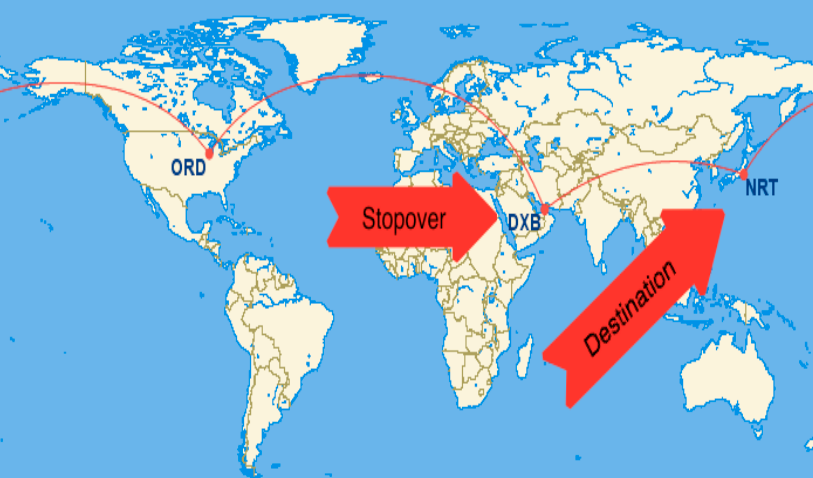
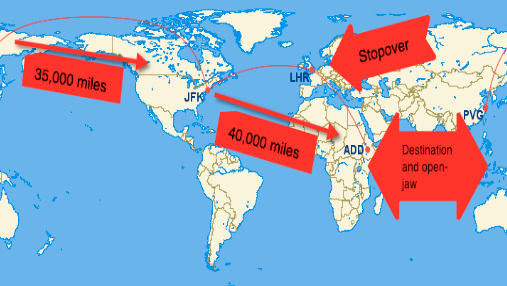
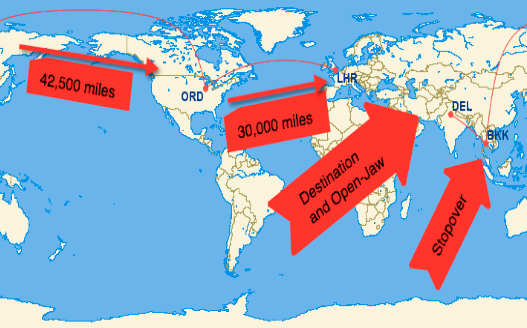
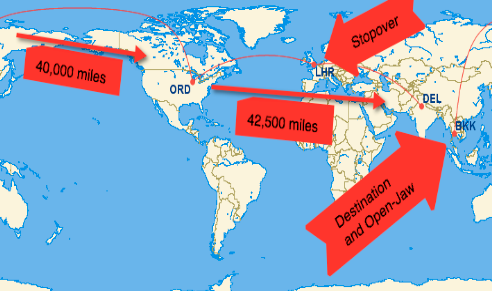
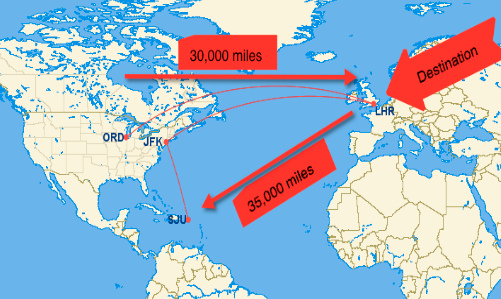
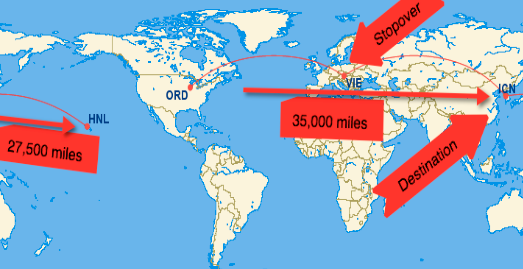

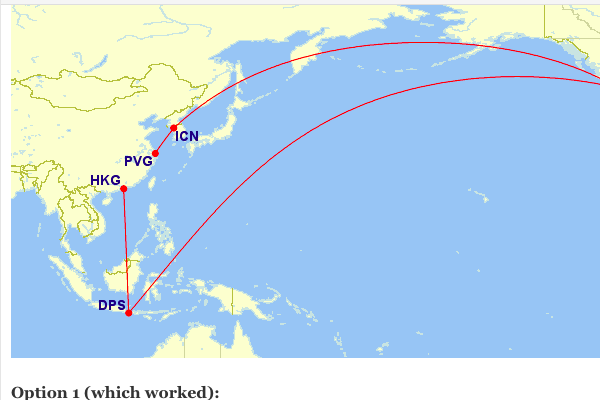

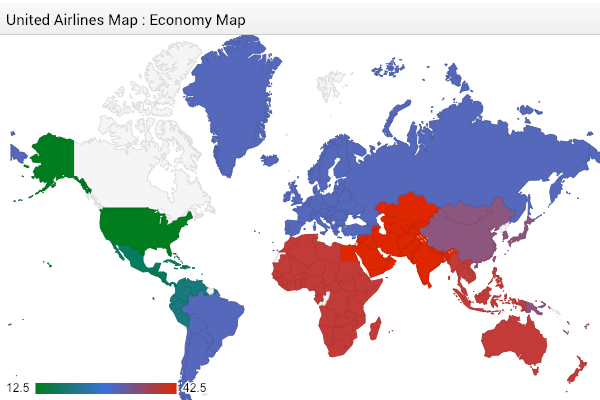
This kind of stuff is why I subscribed to this blog a few years ago. I was kind of sad to see you take it in a different direction over the years, not to mention stopping the newsletters entirely. I’m sure you had a good reason for it though. Cheers for sharing, look forward to tomorrow’s post.
Thanks again for yet another super informative post. I’ve learned more from you than anyone else out there in the miles blogging world. So, I’m pretty certain I understand all the stopover rules, and I definitely want to use my United miles before the rule changes take place. I only have 74K miles so I’d love to use that Oceania powerful zone concept to my advantage. I want to stop in Fiji on my way to either New Zealand, Japan, or anywhere in SE Asia (tried BKK, Jakarta, Singapore), but I’m having trouble even finding a single leg that connects Fiji to anywhere. Can you give any advice on a potential itinerary including Fiji? Is this just a glitch with the website?
Really looking forward to tomorrow’s post as well. Thanks again for all the continued advice!
Fiji is tough because only Air New Zealand flights show up. And Air New Zealand award space is tough to get. They’ll open up more seats for award bookings 2-3 months before departure.
Awesome, thank you Joel. So would the only possibility be NAN-AKL in that case?
Yup, that would unfortunately be the case if using Star Alliance. If you have transferable Ultimate Rewards points, it would make sense sending them into Air France Flying Blue/Korean Air Skypass to route USA-ICN-NAN.
Can’t wait for the rest of it. Thanks
I’ve got one while based in Australia.
Australia to Europe is 85k in J oneway, and Australia to Middle East is 60k.
Route a trip to the Middle East with a stopover in Europe and you get 120k roundtrip in J.
The TPE loophole is awesome! Check out this incredible itinerary…
ORD-ICN – 35,000 United Points
ICN-TPE – $126 on Thai Airways
TPE-AKL – Free segment
CHC-ATL – 40,000 AA points
ATL-ORD – 12,500 United Points
Total=47,500 United Points +taxes, 40,000 AA Points + taxes, $126